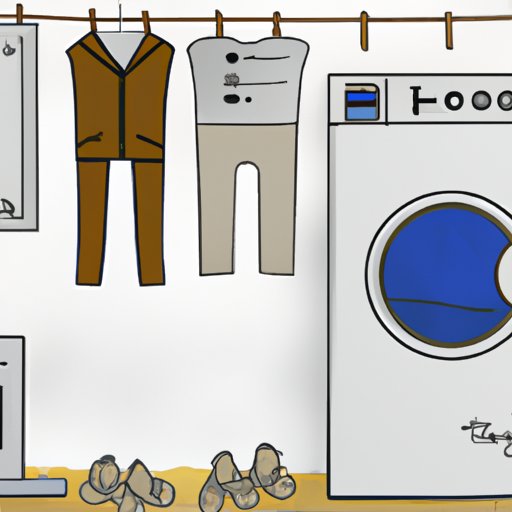Introduction
With rising utility bills and increasing environmental awareness, there is an ever-growing need to be mindful of how much energy we use in our day-to-day lives. This is especially true when it comes to using appliances like dryers, which can consume a significant amount of electricity. The purpose of this article is to provide information on how much energy dryers use and strategies to reduce costs.
Analyzing the Cost of Operating a Dryer: How Much Energy Does it Use?
The cost of running a dryer can vary, depending on several factors such as the size of the load and the type of fabric being dried. On average, however, the U.S. Department of Energy estimates that an electric dryer uses about 5,000 watts of power and costs approximately $0.75 per hour to run. Gas dryers, while slightly more expensive to purchase, typically cost less to operate than electric dryers—about $0.50 per hour.
The amount of energy a dryer uses can also depend on its age and condition. Older models tend to be less energy-efficient than newer models and require more electricity to run. Additionally, if a dryer isn’t properly maintained, its energy efficiency can suffer. Clogged lint filters, overloading, and failing to adequately clean the dryer’s drum can all cause it to use more electricity than necessary.
Exploring the Environmental Impact of Dryers: How Much Electricity Do They Consume?
When compared to other household appliances, dryers are some of the most energy-intensive devices. In fact, according to the U.S. Department of Energy, clothes dryers account for 6% of total residential electricity consumption in the United States. This is more than double the amount of energy consumed by refrigerators (2%), and nearly three times the amount consumed by washing machines (2%).
The electricity used to power dryers has a direct impact on greenhouse gas emissions. In 2019, the electricity sector was responsible for 29% of total U.S. greenhouse gas emissions, making it the second-largest source of emissions behind transportation. By reducing the amount of electricity used to power dryers, we can help mitigate the effects of climate change.

Drying Clothes Efficiently: What You Need to Know About the Power Consumption of Dryers
Fortunately, there are several strategies you can employ to reduce the amount of energy your dryer consumes. The first is to ensure that your dryer is running at peak efficiency. This means regularly cleaning the lint filter, checking the vent for blockages, and having the appliance serviced by a professional every few years.
When purchasing a new dryer, look for an energy-efficient model. These models usually come with the “Energy Star” label, meaning they’ve been certified by the U.S. Environmental Protection Agency (EPA) to meet certain energy-saving standards. Also, consider opting for a gas dryer instead of an electric one, as they generally use less electricity than their electric counterparts.
Cutting Down on Energy Costs with Smart Dryer Usage
In addition to selecting an energy-efficient model, there are several other ways to reduce the amount of energy consumed by your dryer. For starters, try to avoid overloading the dryer. Larger loads take longer to dry and require more electricity. Likewise, setting the temperature too high will cause the dryer to work harder and use more electricity.
Finally, consider air-drying your clothes or using a drying rack. This method requires no electricity and is a great way to save energy and money. Plus, the clothes come out feeling softer and smelling fresher.
Reducing Your Carbon Footprint: Choosing an Energy-Efficient Dryer
When looking for an energy-efficient dryer, there are several factors to consider. First, check the “Energy Guide” label to compare the estimated annual energy use of different models. This will give you an idea of how much electricity each model uses. Additionally, look for features like moisture sensors and adjustable temperatures, which can help reduce energy consumption.
Investing in an energy-efficient dryer may cost more upfront, but it can save you money in the long run. According to the U.S. Department of Energy, an energy-efficient dryer could save you up to $40 per year in energy costs. Plus, you’ll be helping to reduce your carbon footprint.
Conclusion
The amount of energy consumed by a dryer can have a significant impact on your energy bill and the environment. By understanding the average electricity costs associated with operating a dryer, selecting an energy-efficient model, and optimizing dryer usage, you can reduce energy consumption and save money. We hope this article has provided you with the information and resources you need to make smart decisions about dryer usage.


